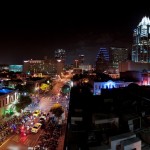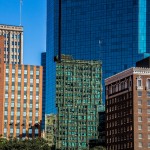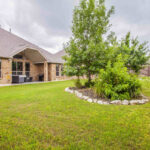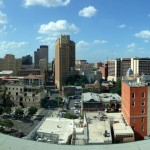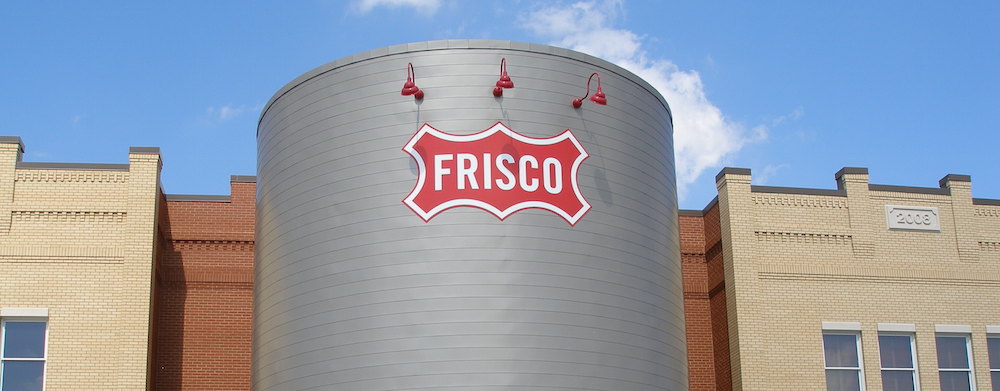
Maybe it’s the stellar schools. Perhaps it’s the abundance of nice homes. Or it might be the allure of lush suburban lawns.
Whatever the reason, big suburbs in Texas — where everything’s bigger, of course — are seeing a significant population spike. For instance, the population of San Marcos, an Austin suburb, soared nearly 8 percent from 2013 to 2014. For that one-year span, San Marcos ranked as the fastest-growing U.S. city with at least 50,000 residents.
Just how much bigger will hyper-growth suburbs like San Marcos get?
A LawnStarter analysis of data from the U.S. Census Bureau and the Texas Water Development Board shows the state’s 10 fastest-growing big suburbs from 2013 to 2014 are projected to grow at least 20 percent over the next 15 years. The Dallas-Fort Worth suburb of Frisco leads the pack, with its population predicted to climb almost 56 percent from 2014 to 2030.
These figures don’t surprise Steve Murdock, director of Rice University’s Hobby Center for the Study of Texas. Murdock, former director of the Census Bureau, says that for decades, suburbs have been the fastest-growing parts of metro areas in Texas. The state’s rapid economic expansion has fueled suburban growth, he said.
In Frisco, an August 2015 estimate pegs the city’s population at more than 150,000.
What’s attracting folks to Frisco? For one thing, its housing market is solid. Personal finance website WalletHub recently put Frisco at No. 1 on its 2015 list of the healthiest U.S. housing markets. WalletHub analyzed 300 cities.
Another draw: Frisco’s public schools. The Frisco Independent School District consistently ranks among the best districts in Texas. Today, the Frisco district serves about 53,000 students. By 2021, that number is projected to reach 70,355.
“We’ve always known we’re going to be a bigger city,” Tom Felker, president of the Frisco Chamber of Commerce, recently told the Dallas Morning News. “We’re all just making certain that we do so in a way that preserves the quality and, where we can, preserve that small-town home feeling that we’ve always had.”
Here’s our ranking of how the 10 fastest-growing big suburbs in Texas will fare over the next 15 years.
1. Frisco, TX
Metro area: Dallas-Fort Worth
July 2013 population: 137,062
July 2014 population: 145,035
Percentage increase: 5.82%
Projected 2030 population: 225,663
2014-2030 percentage increase: 55.59%
Looking for Lawn Care Services in the DFW Metroplex? Check out our Dallas Lawn Care page to book now!
2. Georgetown, TX
Metro area: Austin
July 2013 population: 54,934
July 2014 population: 59,102
2013-2014 percentage increase: 7.59%
Projected 2030 population: 91,085
2014-2030 percentage increase: 54.11%
3. San Marcos, TX
Metro area: Austin
July 2013 population: 54,567
July 2014 population: 58,892
2013-2014 percentage increase: 7.93%
Projected 2030 population: 84,818
2014-2030 percentage increase: 44.02%
4. Conroe, TX
Conroe Convention & Visitors Bureau
Metro area: Houston
July 2013 population: 62,591
July 2014 population: 65,871
2013-2014 percentage increase: 5.24%
Projected 2030 population: 93,516
2014-2030 percentage increase: 41.97%
5. Cedar Park, TX
Metro area: Austin
July 2013 population: 61,292
July 2014 population: 63,574
2013-2014 percentage increase: 3.72%
Projected population in 2030: 89,517
2014-2030 percentage increase: 40.81%
6. New Braunfels, TX
Metro area: San Antonio
July 2013 population: 63,365
July 2014 population: 66,394
2013-2014 percentage increase: 4.78%
2030 projected population: 90,609
2014-2030 percentage increase: 36.47%
7. Sugar Land, TX
Metro area: Houston
July 2013 population: 83,859
July 2014 population: 86,777
2013-2014 percentage increase: 3.48%
2030 projected population: 114,908
2014-2030 percentage increase: 32.42%
8. League City, TX
Metro area: Houston
July 2013 population: 91,031
July 2014 population: 94,403
2013-2014 percentage increase: 3.70%
2030 projected population: 123,577
2014-2030 percentage increase: 30.90%
9. Pearland, TX
Metro area: Houston
July 2013 population: 100,158
July 2014 population: 103,441
2013-2014 percentage increase: 3.28%
2030 projected population: 125,231
2014-2030 percentage increase: 21.07%
10. McKinney, TX
Metro area: Dallas-Fort Worth
July 2013 population: 149,168
July 2014 population: 156,767
2013-2014 percentage increase: 5.09%
2030 projected population: 188,628
2014-2030 percentage increase: 20.32%
Need help tending to your lawn, visit our Austin lawn care page for more info! In addition to Austin, we also provide lawn care service in Round Rock, Cedar Park, Pflugerville, Leander, and Georgetown.
Data sources: U.S. Census Bureau, Texas Water Development Board













